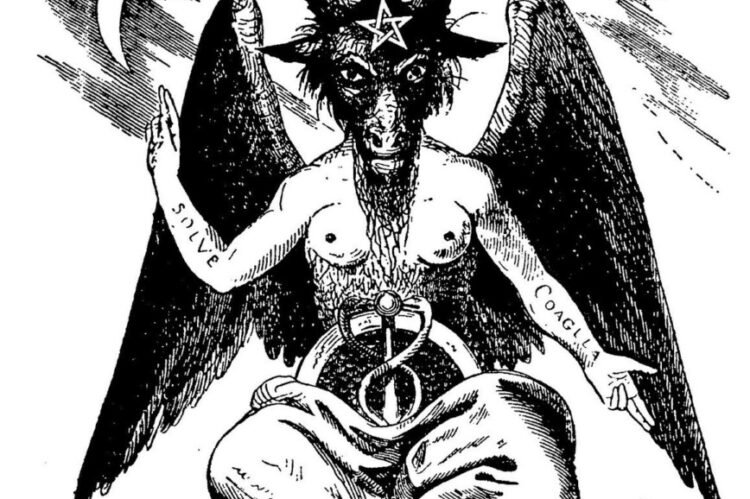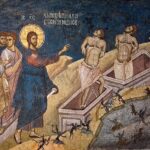The Question of Exorcism
In 1974, then Archbishop Iakovos spoke publicly about the importance of exorcism in cases of purported demonic possession.1 That public pronouncement, by a standing Archbishop of America, worked to validate exorcism for the modern Church, along with the ongoing presence of the seven exorcisms within the Church’s Great Book of Needs.2
The exorcism prayers are rarely read in pastoral situations within the Church. The rubrics accompanying the prayers are extremely limited; further, there is little to no official guidance offered by the hierarchy concerning their proper use. While our understanding of various medical and psychological pathologies would seem to make the exorcism prayers unnecessary and, perhaps, suggestive and dangerous, they constitute a pastoral response to unique and profound spiritual ailments. Whatever the ultimate cause, the Church must respond.
Further, exorcism provides Orthodox Christian parishioners with a tangible connection to the biblical healing ministry of Jesus Christ—expeller of personal demons and cosmic exorcist of the world.3 Though the Church is largely reticent in the matter of exorcism and struggles to guide and mentor clergy facing the question, the prayers remain within the Great Book of Needs for a reason.
Perceptions of Evil & Early Exorcists
The problem of evil has always been a strong consideration of the Church. Concerning the genesis of evil, the patristic Fathers were resolute on the innate goodness of God: “God is not the author of evil” but “prevents, permits, and draws good out of evil.”4 Human beings must intentionally choose to align with the rescue mission of Christ, properly exercising the great gift of free will.5 The Devil and his demons, “powerful adversaries of God and His people,” seek to disrupt and corrupt this spiritual journey.6 The great prize of the enemy is for human beings to believe themselves alien from God, unforgivable and, ultimately, unlovable.
Pastoral & Pathological Concerns
While exorcism is a vital spiritual practice, many complications and concerns surround the possible use of exorcism in a parish or other pastoral setting. These ancient, suggestive prayers often lie in the trembling, confused hands of modern priests. Direction, guidance, and training are nearly non-existent; exorcistic discernment and fitness are major questions as well.Cultural Complications & Orthodox Folk Magic
Popular interest in the topic is yet another problem. From literary and theatrical phenomena like The Exorcist to the recent The Pope’s Exorcist the issue is part of the public imagination. “Real life” studies of possession and exorcism have been highly influential since the 1970s and helped shape public belief and understanding, such as Peck’s Glimpses of the Devil and Martin’s rather dubious Hostage to the Devil.13Subsequent years have seen public interest in the general topic expand, from the 2000s “Teen Witchcraft Movement,” to the “Buffy the Vampire Slayer” craze.14 Then there is the slew of new books, seminars, and conventions that surround us today, including the truly bizarre Eli Roth Presents: The Legion of Exorcists.15 For those dealing with profound medical, psychological, and spiritual difficulties, the power of suggestion is a true concern.
Of course, there is also a profound general interest in unconventional spiritual paths, such as Wicca and a host of other contemporary pagan practices. Many Orthodox “dabble” in such practices, both knowingly and unknowingly.16 A further complication is the collection of various folk practices originating in traditionally Orthodox countries and present in many parishes. A ubiquitous example is belief in the evil eye—the idea that powerfully good or bad feelings, manifest in one’s stare, can affect the life of another.17 There is even the more sinister “vaskania” (the “eye that kills).18
Pastoral Recommendations
Despite these realities, it is also important to keep in mind that rare as possession may be, there is a body of study and evidence that points to cases where there seem to be no answers offered by the medical and psychiatric community.19 The question of exorcism is not irrelevant, and the Orthodox Christian Church would do well to study the issue in further depth and to take appropriate steps toward change.On a further and related point, it would be important for hierarchs to establish a formal process of requesting permission and a blessing for exorcism, with clear protocols and expectations. Alongside this, a system of necessary evaluation should be established for clergy as an initial step before approaching the permission-seeking process. An examination paradigm based on a three “lens” perspective—medical, psychological, and spiritual—could be emulated for this purpose.20
The purposeful establishment of clergy mentoring relationships would also be a helpful addition. Besides the importance of practical guidance by senior clergy, their mentoring presence is needed on a deeper theological and pastoral level. There is also the often-ignored question of the fitness of the priest for such a task. One can only imagine the damage a troubled but well-meaning priest could inflict. His problems could feed and worsen those of the parishioner beyond measure.
Finally, there is also the possibility of reviving the ancient practice of designated exorcists. Every priest is an exorcist, but every priest may not function well in the role. It may be best to “leave the surgery to the surgeon.”21
Answering the Cry
Despite the inherent complexities and barriers, exorcism is intimately related to the life-saving ministry of Jesus Christ: the prayers represent personal encounters with the healing love of Christ, as well as His cosmic exorcism of the Devil as leader of this world. It is an answer to the “cry” of those who supplicate the Lord and, on a certain level, a true phenomenon even if it only exists within the reality of the patient’s perceptions.22Thankfully, besides the challenges surrounding exorcism, there is another force at work within this situation: the mystery of Christ’s ineffable love and healing—to those afflicted not only by demons but every malady of heart, soul, mind, and body. During His time on earth, Christ ministered to those who suffered and, likewise, is present for us today as a compassionate healer.
God will not abandon His people. While the journey toward healing and liberation may be trying and even perilous, the clergy and the faithful do not walk alone.
Sources:
[1] Demetrios Koukouzes, “Exorcism and Exorcists in the Greek Orthodox Tradition,” Homily presented at Sage Chapel, Cornell University (Ithaca, NY, March 10, 1974).
[2] “The Occasional Services,” vol. 3 of The Great Book of Needs: Expanded and Supplemented, trans. St. Tikhon’s Monastery (South Canaan, PA: St. Tikhon’s Seminary Press, 2002).
[3] Robert M. Johnston, “Demon Possession and Exorcism in the New Testament,” Journal of Adventist Missions Studies 11, no. 2 (2015): 23.
[4] Paul L. Gavrilyuk, “The Problem of Evil: Ancient Answers and Modern Discontents,” International Journal of Orthodox Theology 9, no. 4 (2018): 21.
[5] Metropolitan Chrysostom of Aetna, “Demonology in the Orthodox Church: A Psychological Perspective,” in Contemporary Traditionalist Orthodox Thought: A Second Volume, eds. Metropolitan Chrysostomos of Aetnea, Bishop Auxentios of Photiki, and Archmandrite Akakios (California: Center for Traditionalist Orthodox Studies, 1998), 27.
[6] Stanley Samuel Harakas, Contemporary Moral Issues Facing the Orthodox Christian, Revised and Expanded ed. (Minneapolis: Light and Life Publishing Company, 2015), 14.
[7] Toon Bastiaensen, “Exorcism: Tackling the Devil by Word of Mouth,” in Demons and the Devil in Ancient and Medieval Christianity, eds. Willemien Otten and Nienke Vos (Lieden: Brill, 2011), 134.
[8] George C. Papademetriou, “Exorcism in the Orthodox Church,” in Exorcism Through the Ages, ed. St. Elmo Nauman, Jr. (New York Philosophical Library, 1998), 46.
[9] Stevan L. Davies, Jesus the Healer (London: SCM Press, Ltd., 1995), 93.
[10] Dionysios Stathakopoulos, “The Boundaries between Possession and Disease: Medical Concepts in Byzantine and Post-Byzantine Exorcisms,” in Madness and Ecstasy: Literary Configurations between Christian Antiquity and the Middle Ages (Imagines Medii Aevi. Interdisciplinary Contributions to Medieval Research), eds. Cora Dietl, Nadine Metzger, and Christoph Schanze (Wiesbaden, Germany: Reichert Verlag, 2020), 4.
[11] Davies, Jesus the Healer, 93.
[12] Zlatko Sram, “Psychopathy and Depression as Predictors of the Satanic Syndrome,” Open Theology 3, no. 1 (2017): 101.
[13] M. Scott Peck, Glimpses of the Devil: A Psychiatrist’s Personal Accounts of Possession, Exorcism, and Redemption. New York: Free Press, 2009; Malachi Martin, Hostage to the Devil: The Possession and Exorcism of Five Contemporary Americans (San Francisco: Harper San Francisco, 1992).
[14] Ethan Doyle White, Wicca: History, Belief, and Community in Modern Pagan Witchcraft (Eastborne: Sussex Academic Press, 2015), 65.
[15] Brian Knappmiller, dir., Eli Roth Presents: The Legion of Exorcists, Season #1, Aired on Travel Channel.
[16] Nicholas Krommydas, personal interview with the author, June 2023, Weston, MA.
[17] Eugenia Roussou, Orthodox Christianity, New Age Spirituality and Vernacular Religion: The Evil Eye in Greece (London: Bloomsbury Academic, 2021): 2-3.
[18] Ibid, 3.
[19] Nicholas Krommydas.
[20] Julie J. Exline, et al., “Mental Illness, Normal Psychological Processes, or Attacks by the Devil? Three Lenses to Frame Demonic Struggles in Therapy,” Spirituality in Clinical Practice 8, no. 3 (September 1, 2021): 221.
[21] Nicholas Krommydas.
[22] Psalm 101(2) NKJV.
Images:
Figure 1: https://orthochristian.com/74998.html
Figure 2: https://www.etsy.com/listing/1104632546/10-pcs-martyrika-martirika-witness-pins
Figure 3: https://www.bbc.com/news/magazine-33682878 https://www.etsy.com/listing/1104632546/10-pcs-martyrika-martirika-witness-pins




Fascinating and thorough exploration of a topic that is rarely discussed–despite urgent importance. I’m curious about Fig 2: Have you seen the mati connected to cross on the same pin like it is in this image? If memory serves, I’ve seen many people attach mati pins to babies’ Baptismal garments. As you’ve noted, Fr. Alex, “these disconnects between official and popular belief are difficult to navigate.”
Hi Brandy, thanks so much for your comments. I have indeed seen the “mati” pin used with a cross on baptismal garments, which creates a pastoral concern–but also an opportunity for discussion. I try and meet with families ahead of baptisms, which helps create space for discussions about items like this. Thanks again for the insightful comment.
Mr. Chetsas,
Thanks for this. Are you an Orthodox doctoral candidate at Candler? I live near Atlanta and have done a great deal of research into possession and exorcism. And I am Orthodox (after many years as a Lutheran).
Also, who is Nicholas Krommydas? I can’t find any info on him in your piece, or in the FNs.
Thanks.
Timothy R. Furnish (PhD, Islamic history)
jinnandtonic [at] yahoo [dot] com
Fr. Chetsas,
I just found you on Linkedin!
Tim Furnish